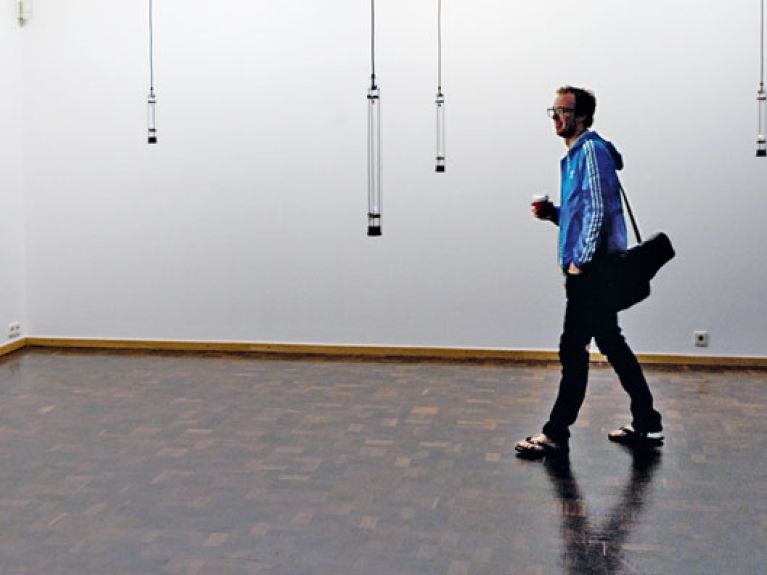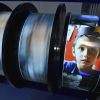Exchange and experimentation
Young media artists are interconnected through the EMARE program.

Canada is a cradle of modern media theory. The theory’s foundation was laid by Marshall McLuhan (1911–1980) from Edmonton, working virtually single-handedly at the University of Toronto. His maxim “The medium is the message” remains accepted even today: every medium shapes different habits of perception and produces new forms of social organization. That’s why Canada was a natural choice as partner country for the European Media Art Network (EMAN), founded in 2007 as the umbrella organization of the European Media Artists in Residence Exchange (EMARE). The exchange program was launched in 1995 by the Werkleitz Center for Media Art, which has been based in Halle (Saale) since 2004. Over a period of 20 years, EMARE has enabled more than 160 young artists to complete a two-month residency abroad, allowing them to gain new experience and make new contacts.
Freedom instead of rigid structures
The EMAN network currently comprises four European partners and three partners each in Australia and Canada. In 2014–2015, no less than 450 artists applied for the 16 scholarships that were awarded, explains EMAN project manager Peter Zorn. Selection is, he points out, in the hands of the host institutions, which subsequently look after their grant holders and ensure that they are able to realize their projects without having to compromise. He believes that explains the program’s attractiveness: “Artists have less and less freedom to realize their projects in the way they want to. The commercial art world is becoming ever more rigidly structured.”
Two of the 16 EMARE grant holders from the latest round of submissions are from Germany; both had applied for a place in Canada. Isabell Spengler was accepted by the Images Festival in Toronto, which since 1987 has evolved into North America’s biggest experimental-film festival. The 43-year-old Spengler has taught experimental film at Berlin’s University of the Arts (UdK) since 2004.
Canada was the first choice for her to realize her video installation “Two Days at the Falls”. Using two 360-degree panoramic depictions, she contrasts her filmed view of the real Niagara Falls with “cultural images” of the natural spectacle from the last 150 years in order to highlight the differences between reality and imagination. Using historical artifacts, she had previously built a three-dimensional model in the studio, but a trip there was essential to capture video of the real falls. The artist was impressed with her work environment in Canada: “The Trinity Square Video Gallery in Toronto was a great help to me in post-production and showed the finished work in a solo exhibition.” It attracted a great deal of interest, she says, because “Canada boasts a vibrant experimental-film and video-art scene”.
Verena Friedrich’s experience was similar. The 34-year-old studied at the University of Art and Design in Offenbach and the Academy of Media Arts Cologne. Her work focuses on new techniques at the interface between art and science; before her stay abroad, she spent six months as Artist in Residence at the Max Planck Institute for Biology of Ageing.
In April and May 2015, Verena Friedrich completed a resi- dency at OBORO, a nonprofit organization in Montréal that has supported various forms of multimedia art since 1984. While there, she worked on the project The Long Now, attempting to improve the durability of soap bubbles. In these shimmering entities, the artist sees a visual metaphor for the transient and ephemeral nature of existence. At OBORO, Friedrich felt she was “in the best of hands; I was looked after fantastically,“ she enthuses and emphasizes, “Montréal has a very vibrant media- and machine-art scene.” The works created during Friedrich’s and the other 15 EMARE grant holders’ stays abroad will go on show at the Werkleitz festival .move ON in Halle from October 9 through 25, 2015. ▪

